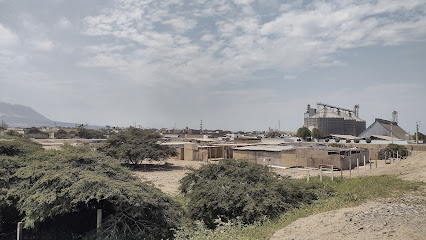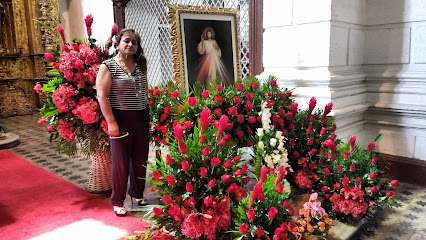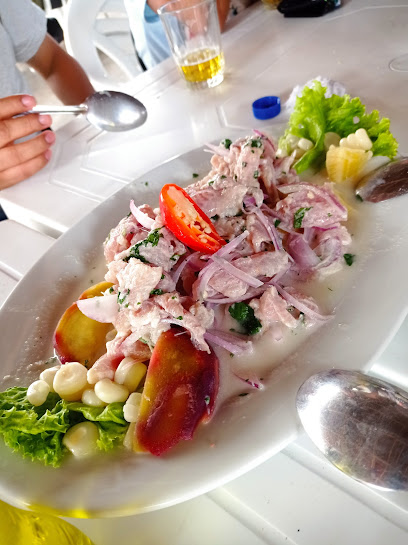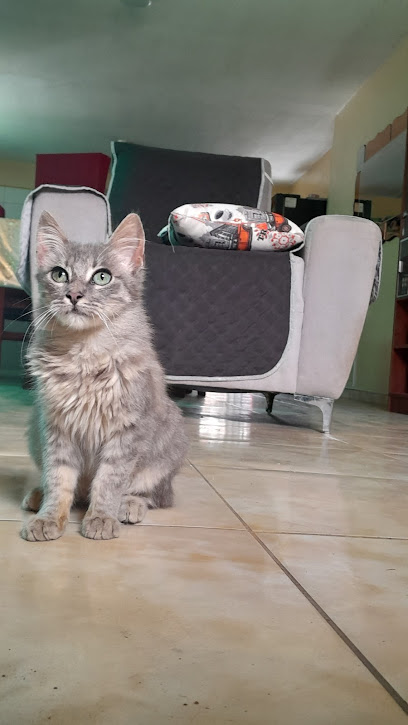
Exploring the Ancient Majesty of Chan Chan
Discover the ancient splendor of Chan Chan in Trujillo, Peru, the world's largest adobe city and a captivating window into the Chimú civilization's architectural mastery.
Chan Chan, located in Trujillo, Peru, is a mesmerizing archaeological site that once served as the capital of the Chimú civilization. As the largest adobe city in the world, it offers a unique glimpse into pre-Columbian history and culture. The sprawling ruins, covering approximately 20 square kilometers, are a testament to the ingenuity and craftsmanship of the Chimú people. Walking through the remnants of palaces, ceremonial plazas, and intricate friezes, visitors are transported back in time to an era of immense cultural and architectural prowess. The site is divided into nine citadels, each with its own distinctive features, including grand courtyards, storerooms, and burial platforms. The walls of these structures are adorned with detailed carvings and reliefs depicting deities, marine life, and geometric patterns. A visit to the Tschudi Palace, one of the most well-preserved areas, is particularly captivating, offering insights into the daily lives and spiritual practices of the Chimú elite. Beyond the ruins, the Chan Chan Site Museum provides additional context and artifacts, making it an essential stop for anyone keen to deepen their understanding of this ancient civilization. The museum's exhibits include pottery, textiles, and metalwork, showcasing the artistic and technological advancements of the Chimú. As you explore Chan Chan, the blend of history, art, and culture creates an unforgettable experience, making it a must-visit destination for any traveler to Peru.
Local tips in Chan Chan
- Visit early in the morning to avoid the heat and crowds.
- Hire a local guide for a more informative experience.
- Wear comfortable shoes as the terrain can be uneven.
- Bring water and sunscreen, as there is little shade.
- Don't miss the Chan Chan Site Museum for a comprehensive history.
Exploring the Ancient Majesty of Chan Chan
Chan Chan, located in Trujillo, Peru, is a mesmerizing archaeological site that once served as the capital of the Chimú civilization. As the largest adobe city in the world, it offers a unique glimpse into pre-Columbian history and culture. The sprawling ruins, covering approximately 20 square kilometers, are a testament to the ingenuity and craftsmanship of the Chimú people. Walking through the remnants of palaces, ceremonial plazas, and intricate friezes, visitors are transported back in time to an era of immense cultural and architectural prowess. The site is divided into nine citadels, each with its own distinctive features, including grand courtyards, storerooms, and burial platforms. The walls of these structures are adorned with detailed carvings and reliefs depicting deities, marine life, and geometric patterns. A visit to the Tschudi Palace, one of the most well-preserved areas, is particularly captivating, offering insights into the daily lives and spiritual practices of the Chimú elite. Beyond the ruins, the Chan Chan Site Museum provides additional context and artifacts, making it an essential stop for anyone keen to deepen their understanding of this ancient civilization. The museum's exhibits include pottery, textiles, and metalwork, showcasing the artistic and technological advancements of the Chimú. As you explore Chan Chan, the blend of history, art, and culture creates an unforgettable experience, making it a must-visit destination for any traveler to Peru.
Iconic landmarks you can’t miss
Chan Chan
Explore Chan Chan, the largest earthen city in the world, showcasing the remarkable history and architecture of the ancient Chimú civilization.

Chan Chan Site Museum
Explore the ancient Chimu civilization at Chan Chan Site Museum in Huanchaco, showcasing captivating artifacts and rich cultural history.

La Huaca del Sol
Explore La Huaca del Sol, an ancient Moche ruin in Valle de Moche, Peru, and uncover the secrets of a remarkable civilization.

Ruinas Chan Chan
Explore Ruinas Chan Chan, a UNESCO World Heritage site showcasing the grandeur of the Chimu civilization in Huanchaco, Peru.

Toledo Sacred Area
Discover the Toledo Sacred Area in Huanchaco, Peru – a historical landmark where ancient cultures come alive amidst stunning coastal views.

Mural Chan Chan
Explore Mural Chan Chan, a UNESCO World Heritage Site showcasing exquisite Chimu murals and a rich cultural legacy in Víctor Larco Herrera, Peru.

CHAN CHAN
Explore Chan Chan, the world's largest adobe city and a UNESCO World Heritage Site, revealing the splendor of ancient Chimu civilization.

Xllangchic An
Explore Xllangchic An in Huanchaco, a captivating tourist attraction showcasing Peru's rich culture, history, and stunning coastal beauty.

Ñing An
Discover the coastal charm and cultural richness of Huanchaco at Ñing An, a captivating tourist attraction that offers unforgettable experiences.

Centro Cultural Chan Chan, trujillo
Explore the ancient wonders of Chan Chan, an archaeological marvel showcasing the grandeur of the Chimu civilization in Huanchaco, Peru.

Unmissable attractions to see
Plaza de Armas of Trujillo
Discover the vibrant heart of Trujillo at the Plaza de Armas, a historical landmark filled with culture, beauty, and local charm.

Chan Chan
Unravel the mysteries of Chan Chan, the breathtaking ancient city of the Chimu civilization, showcasing exquisite adobe architecture and rich history.

La Huaca de la Luna
Explore La Huaca de la Luna, an archaeological gem in Moche, Peru, showcasing the artistry and spirituality of the ancient Moche civilization.

Archeological complex El Brujo
Discover the ancient wonders of El Brujo, an archaeological complex showcasing the rich heritage of the Moche civilization in Peru.

Trujillo Toy Museum
Discover the whimsical world of toys at the Trujillo Toy Museum, a unique cultural attraction that celebrates childhood through interactive exhibits and vintage collections.

Museo Huacas de Moche
Unearth the mysteries of the Moche civilization at Museo Huacas de Moche, a captivating museum showcasing ancient artifacts and architectural wonders.

Casa Urquiaga
Explore the rich cultural heritage and history of Trujillo at Casa Urquiaga, a captivating museum in Peru's Historic Centre.

Ruinas Chan Chan
Uncover the secrets of Ruinas Chan Chan, a UNESCO World Heritage Site in Peru, where the ancient Chimu civilization's legacy endures.

Casa Ganoza Chopitea
Explore the historical charm of Casa Ganoza Chopitea, a key heritage site in Trujillo, Peru, rich in culture and architectural beauty.

Centro Cultural Chan Chan, trujillo
Explore the rich heritage of the Chimu civilization at Centro Cultural Chan Chan in Huanchaco, a must-visit archaeological museum.

Essential places to dine
Restaurante Chan Chan
Experience authentic Peruvian cuisine at Restaurante Chan Chan in Trujillo - where every dish tells a story of flavor and tradition.

Mama Quecha
Experience authentic Peruvian cuisine at Mama Quecha in Trujillo—where tradition meets flavor in every dish.

K Tal Marucha
Discover authentic Peruvian flavors at K Tal Marucha in Trujillo - where every dish tells a story.

Restaurant El Rincon De Shimo
Discover El Rincon De Shimo: A Culinary Haven in Trujillo Offering Authentic Peruvian Flavors in a Cozy Atmosphere.

El Buen Chalán
Experience authentic Peruvian cuisine at El Buen Chalán in Trujillo - where tradition meets flavor in a vibrant dining atmosphere.

Restaurant El Nativo
Discover authentic Peruvian cuisine at Restaurant El Nativo in Trujillo – where every dish is a celebration of flavor and tradition.

Restaurant criolla
Experience authentic Peruvian cuisine at Restaurant Criolla in Trujillo—where family-friendly dining meets rich cultural flavors.

Luzirene Restaurant
Experience authentic Peruvian cuisine at Luzirene Restaurant in Trujillo - where every dish tells a story.

Markets, malls and hidden boutiques
Gzuck
Explore Gzuck in Trujillo for an unforgettable shopping experience with trendy clothing and unique Peruvian styles.

Beekiss
Discover the essence of Peru at Beekiss, Trujillo's charming gift shop, offering unique artisan crafts and memorable souvenirs for every traveler.

Tienda
Discover the essence of Peru's natural treasures at Tienda in Trujillo - your go-to spot for organic and local goods.

Maui And Sons
Explore Maui And Sons in Trujillo for the latest trends in clothing, bags, and shoes, offering a unique shopping experience for every visitor.

D&D Shop
Discover unique styles at D&D Shop in Trujillo, where fashion meets local culture in a vibrant shopping experience.

Irónica Showroom
Explore Irónica Showroom in Trujillo for a unique shopping experience filled with local crafts and eclectic finds, perfect for souvenirs.

Detalles A&X
Discover unique Peruvian gifts at Detalles A&X in Trujillo – a must-visit for tourists seeking authentic souvenirs.

Enchantee
Explore Enchantee in Trujillo for a unique selection of stylish women's clothing that embodies modern Peruvian fashion.

Sweety
Find the perfect souvenir at Sweety Gift Shop, where local craftsmanship meets unique gifts in a charming atmosphere.

Luisa Pelaez y su Boutique
Explore Luisa Pelaez y su Boutique in Trujillo for stylish beachwear and vibrant fashion essentials to enhance your seaside experience.

Essential bars & hidden hideouts
Matanga Pub
Experience the vibrant nightlife of Trujillo at Matanga Pub, where great drinks and a fun atmosphere await.

Casa Blanca Restobar
Discover the vibrant flavors and lively atmosphere of Casa Blanca Restobar, Trujillo's premier gastropub for an unforgettable dining experience.

Restaurante Chan Chan
Experience the authentic flavors of Trujillo at Restaurante Chan Chan, where traditional Peruvian dishes come to life in a warm and inviting setting.

Aborigenes Tiki Bar
Discover Aborigenes Tiki Bar: A Tropical Escape in Trujillo with Exotic Cocktails and Lively Atmosphere.

Kabubi
Experience the best grilled cuisine at Kabubi in Trujillo, where flavor meets tradition in a vibrant setting.

MUNAY COFFE & BAR
Experience the fusion of coffee culture and nightlife at Munay Coffee & Bar in Trujillo, Peru.

Previos Pisco Bar
Experience the essence of Peruvian culture at Previos Pisco Bar in Trujillo, where every sip tells a story of tradition and flavor.

Vibes garden rest & bar
Experience tranquility at Vibes Garden Rest & Bar, your serene retreat in Trujillo, where delightful drinks and a lush garden await.

El Chalaquito - Resto Bar
Experience the vibrant nightlife of Trujillo at El Chalaquito - Resto Bar, where local flavors and lively atmosphere come together.

Tóxica
Discover the vibrant nightlife of Trujillo at Tóxica, where creative cocktails meet lively atmosphere for an unforgettable experience.

Local Phrases
-
- HelloKausaykama
[cow-say-ka-ma] - GoodbyeAllinllasaq
[al-leen-ya-sak] - YesArí
[ah-ree] - NoManan
[ma-nan] - Please/You're welcomePurishun
[poo-ree-shoon] - Thank youSulpayki
[sul-pai-kee] - Excuse me/SorryPashan
[pa-shan] - How are you?Ima sutiyki?
[ee-ma soo-tee-kee] - Fine. And you?Allin. Ima sutiyki?
[al-leen. ee-ma soo-tee-kee] - Do you speak English?Inglis wasipi rimanki?
[ing-lees wa-see-pee ree-man-kee] - I don't understandManan rimanki
[ma-nan ree-man-kee]
- HelloKausaykama
-
- I'd like to see the menu, pleaseMenuyta kashanki, purishun
[men-oo-ee-ta ka-shan-kee, poo-ree-shoon] - I don't eat meatKarni wayk'uwanmi
[kar-nee why-koo-wan-mee] - Cheers!Ari!
[ah-ree] - I would like to pay, pleaseJawapi kashanki, purishun
[ha-wa-pee ka-shan-kee, poo-ree-shoon]
- I'd like to see the menu, pleaseMenuyta kashanki, purishun
-
- Help!Yanapani!
[yan-a-pa-nee] - Go away!Ruwasqay!
[roo-was-kai] - Call the Police!Sut'iyki wasipi qiriy!
[soo-tee-kee wa-see-pee kee-ree] - Call a doctor!Sut'iyki yachaq qiriy!
[soo-tee-kee ya-cha-ke kee-ree] - I'm lostAykitaqmi
[ai-kee-tak-mee] - I'm illManan sumaqmi
[ma-nan soo-mak-mee]
- Help!Yanapani!
-
- I'd like to buy...Rikuchiyta kayanki...
[ree-koo-chee-ta ka-yan-kee] - I'm just lookingKikinkuwan
[kee-keen-koo-wan] - How much is it?Iman sut'iyki?
[ee-man soo-tee-kee] - That's too expensiveKaypi sumaqmi
[kai-pee soo-mak-mee] - Can you lower the price?Sut'iyki kanan?
[soo-tee-kee ka-nan]
- I'd like to buy...Rikuchiyta kayanki...
-
- What time is it?Iman tiyaykiki?
[ee-man tee-yai-kee-kee] - It's one o'clockHuk p'unchay
[hook poon-chai] - Half past (10)Iskay p'unchay
[ees-kai poon-chai] - MorningP'unchay
[poon-chai] - AfternoonCh'aski p'unchay
[chask-ee poon-chai] - EveningTuta p'unchay
[too-ta poon-chai] - YesterdayIllapa p'unchay
[eel-la-pa poon-chai] - TodayKunan p'unchay
[koo-nan poon-chai] - TomorrowMawk'a p'unchay
[mowk-ka poon-chai] - 1Huk
[hook] - 2Iskay
[ees-kai] - 3Kimsa
[keem-sa] - 4Tawa
[ta-wa] - 5Pichqa
[peech-ka] - 6Soqta
[sok-ta] - 7Qanchis
[kahn-chees] - 8Pusaq
[poo-sak] - 9Isku
[ees-koo] - 10Chunka
[choon-ka]
- What time is it?Iman tiyaykiki?
-
- Where's a/the...?Maypi kanki...
[my-pee kan-kee] - What's the address?Ima qhawarinkiki?
[ee-ma kha-wa-reen-kee-kee] - Can you show me (on the map)?Mapa kaniykita kanchu?
[ma-pa ka-nee-kee-ta kan-choo] - When's the next (bus)?Kaypi sut'iyki (pisaku) riqsichis?
[kai-pee soo-tee-kee pee-sak-oo reek-see-chees] - A ticket (to ....)Pisakuyta (....) kaniykita
[pee-sak-oo-yta ka-nee-kee-ta]
- Where's a/the...?Maypi kanki...
History of Chan Chan
-
Chan Chan was the capital of the Chimú civilization, which flourished from around 900 AD until the Inca conquest in the 15th century. The Chimú people were known for their advanced agricultural techniques, intricate pottery, and elaborate textiles. Chan Chan itself was a sprawling urban center, showcasing the sophistication of Chimú architecture and urban planning.
-
The city of Chan Chan is renowned for its monumental adobe structures, which include palaces, temples, and residential areas. The most notable features are the intricate friezes and reliefs that depict animals and geometric patterns, highlighting the artistic prowess of the Chimú artisans. The layout of Chan Chan reflects a deep understanding of urban design, with a focus on both functionality and ceremonial spaces.
-
In the late 15th century, the Inca Empire, under the leadership of Tupac Yupanqui, conquered Chan Chan. The integration of the Chimú into the Inca Empire led to significant cultural exchanges, although the Chimú identity and traditions persisted. The Incas admired the architectural and agricultural innovations of the Chimú, which they incorporated into their own practices.
-
The arrival of Spanish conquistadors in the 16th century marked a turning point for Chan Chan. The city faced neglect and devastation due to colonization and the subsequent decline of indigenous populations. Many of the adobe structures began to deteriorate, and the once-thriving city became a shadow of its former self, with the surrounding area repurposed for colonial agricultural ventures.
-
Today, Chan Chan is recognized as a UNESCO World Heritage Site, emphasizing the need for preservation and study of its historical significance. Archaeological efforts continue to uncover the complexities of Chimú society, while local and international initiatives aim to promote cultural heritage tourism. The site stands as a testament to the rich history of Trujillo and the legacy of the Chimú civilization.
Chan Chan Essentials
-
Chan Chan is easily accessible from the city of Trujillo. Visitors can take a local taxi or a mototaxi from the city center, which typically takes around 15-20 minutes. Alternatively, buses frequently run from the main bus terminal in Trujillo to Chan Chan. If you're coming from Huanchaco, expect a similar travel time using local transport options.
-
Chan Chan is best explored on foot, as the archaeological site covers a vast area. There are no trains or trams in the vicinity; however, bicycles can be rented from local shops if you prefer to cycle around. Taxis and mototaxis are also available for convenient travel between the main entrances of the site and other nearby attractions.
-
Chan Chan is generally safe for tourists, but it's advisable to remain vigilant, especially in less crowded areas. Avoid walking alone at night and keep an eye on your belongings. Certain neighborhoods in Trujillo, such as the areas around the bus terminal and some parts of the city center, may have higher crime rates, particularly for petty theft targeting tourists.
-
In the event of an emergency, dial 105 for police assistance or 116 for fire services in Peru. Hospitals and clinics are available in Trujillo. It is recommended to have travel insurance that covers medical emergencies. For minor issues, local pharmacies can provide over-the-counter medications.
-
Fashion: Do wear comfortable clothing suitable for walking and exploring, and consider light layers for the coastal climate. Don’t wear revealing clothing, especially when visiting nearby temples. Religion: Do respect local customs and practices; avoid taking photos of religious rituals without permission. Public Transport: Do be courteous to fellow travelers. Don't use your phone loudly on public transport. Greetings: Do greet with a smile and a handshake. Eating & Drinking: Do try local dishes and stay hydrated. Don’t eat or drink in sacred areas.
-
To experience Chan Chan like a local, visit the nearby markets where you can find traditional crafts and local foods. Engage with local artisans, who are often eager to share their knowledge about the history and significance of the site. Try to attend a guided tour for deeper insights into the culture and architectural marvels of Chan Chan. Also, consider visiting the site early in the morning to avoid crowds and capture the beauty of the ruins in the soft morning light.
Nearby Cities to Chan Chan
-
Things To Do in Chiclayo
-
Things To Do in Huaraz
-
Things To Do in Piura
-
Things To Do in Loja
-
Things To Do in Lima
-
Things To Do in Cuenca
-
Things To Do in Huancayo
-
Things To Do in Macas
-
Things To Do in Guayaquil
-
Things To Do in Salinas
-
Things To Do in Ica
-
Things To Do in Ambato
-
Things To Do in Ayacucho
-
Things To Do in Tena
-
Things To Do in Iquitos








